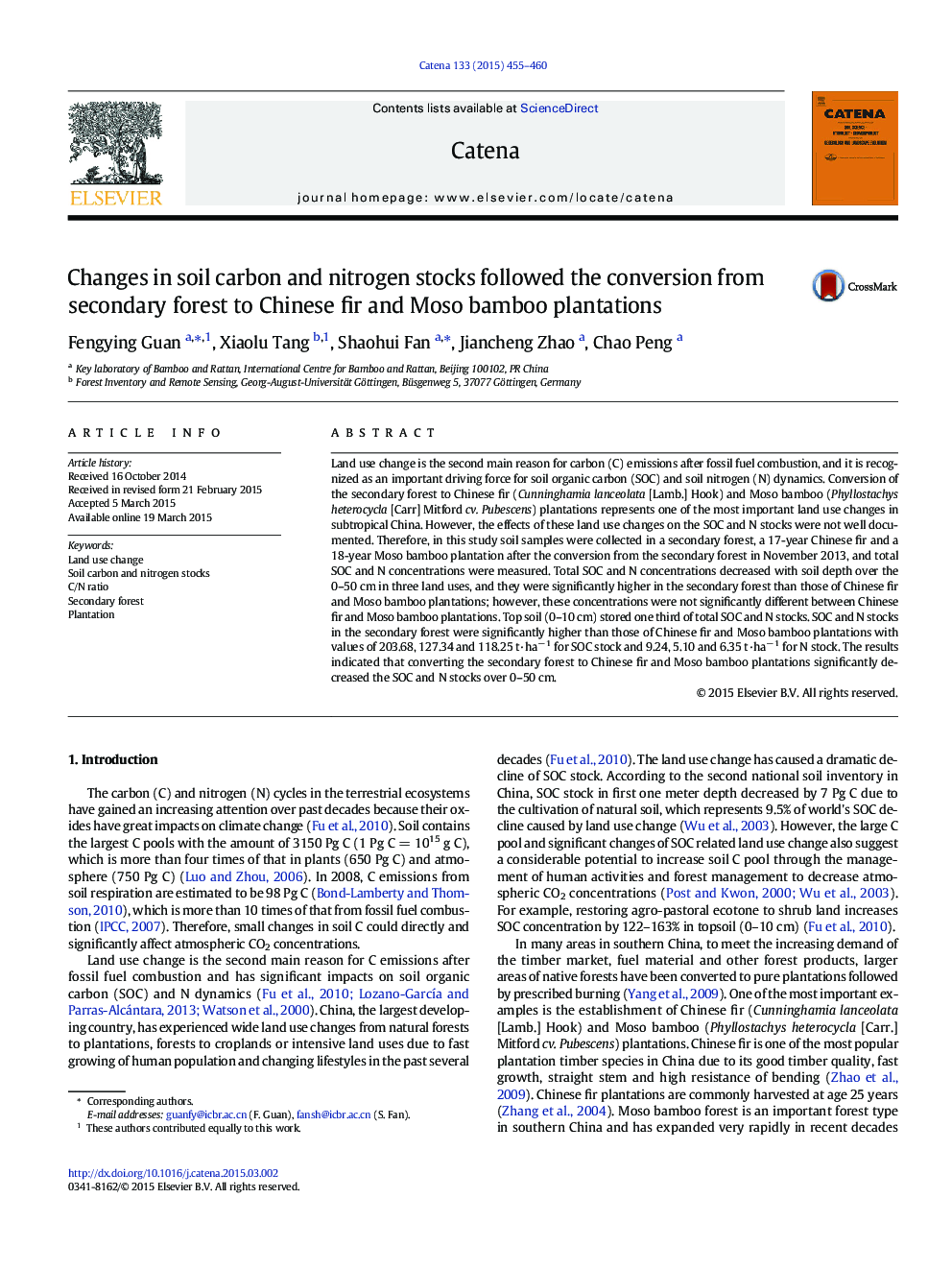| کد مقاله | کد نشریه | سال انتشار | مقاله انگلیسی | نسخه تمام متن |
|---|---|---|---|---|
| 4571063 | 1629219 | 2015 | 6 صفحه PDF | دانلود رایگان |

• Soil was sampled in a secondary forest, converted Chinese fir and Moso bamboo plantation.
• Total soil organic carbon (SOC) and nitrogen (N) content decreased with soil depth.
• Forest conversion significantly decreased SOC and N concentrations.
• Forest conversion significantly decreased SOC and N stocks over 0–50 cm.
Land use change is the second main reason for carbon (C) emissions after fossil fuel combustion, and it is recognized as an important driving force for soil organic carbon (SOC) and soil nitrogen (N) dynamics. Conversion of the secondary forest to Chinese fir (Cunninghamia lanceolata [Lamb.] Hook) and Moso bamboo (Phyllostachys heterocycla [Carr] Mitford cv. Pubescens) plantations represents one of the most important land use changes in subtropical China. However, the effects of these land use changes on the SOC and N stocks were not well documented. Therefore, in this study soil samples were collected in a secondary forest, a 17-year Chinese fir and a 18-year Moso bamboo plantation after the conversion from the secondary forest in November 2013, and total SOC and N concentrations were measured. Total SOC and N concentrations decreased with soil depth over the 0–50 cm in three land uses, and they were significantly higher in the secondary forest than those of Chinese fir and Moso bamboo plantations; however, these concentrations were not significantly different between Chinese fir and Moso bamboo plantations. Top soil (0–10 cm) stored one third of total SOC and N stocks. SOC and N stocks in the secondary forest were significantly higher than those of Chinese fir and Moso bamboo plantations with values of 203.68, 127.34 and 118.25 t·ha− 1 for SOC stock and 9.24, 5.10 and 6.35 t·ha− 1 for N stock. The results indicated that converting the secondary forest to Chinese fir and Moso bamboo plantations significantly decreased the SOC and N stocks over 0–50 cm.
Journal: CATENA - Volume 133, October 2015, Pages 455–460